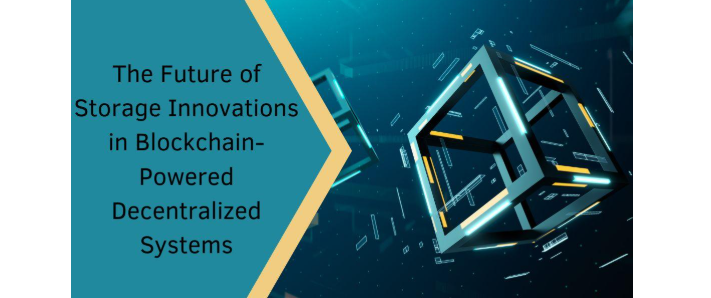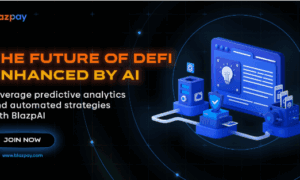In this modern era, Ankit Gupta, a leading researcher in decentralized technologies, introduces a revolutionary framework for object storage. By integrating blockchain, distributed hash tables (DHTs), and advanced cryptographic techniques, his work offers a secure, efficient, and sustainable alternative to centralized cloud storage. This innovative approach enhances data integrity, reduces reliance on central entities, and paves the way for a more resilient and decentralized digital storage ecosystem.
Moving Beyond Centralized Constraints
Traditional storage systems face scalability, security, and cost challenges, with centralized models prone to failures and privacy risks. Decentralized storage leverages blockchain, DHTs, and cryptography to enhance security, availability, and resilience. Distributing data across nodes eliminates central dependencies, ensuring efficiency, fault tolerance, and a sustainable digital storage solution.
The Role of Distributed Hash Tables
This innovation’s heart lies in Distributed Hash Tables (DHTs), which enable efficient and scalable data retrieval. Unlike conventional routing mechanisms, this system achieves logarithmic lookup complexity and maintains consistent response times, even as the network expands. Load balancing is optimized through advanced hashing techniques, ensuring smooth data distribution across nodes.
Blockchain: The Backbone of Security and Efficiency
Blockchain integration introduces an immutable ledger for storage transactions, ensuring transparency and security. This system employs a modified proof-of-storage consensus mechanism, validating data integrity through cryptographic proofs. Smart contracts govern storage agreements, streamlining enforcement and reducing operational overhead.
Homomorphic Encryption: Enhancing Data Privacy
The framework employs homomorphic encryption, enabling computations on encrypted data without decryption, ensuring security throughout processing. Unlike traditional methods that expose data during manipulation, this approach preserves privacy while allowing seamless operations. It optimizes execution efficiency, minimizing computational overhead while maintaining strong security. This balance of performance and encryption enhances trust in decentralized storage, ensuring secure, fast, and accessible data processing without compromising protection.
Erasure Coding for Data Redundancy
The system incorporates erasure coding to enhance reliability. This advanced data protection mechanism efficiently balances storage overhead with repair bandwidth. Unlike traditional replication, which requires excessive redundancy, erasure coding fragments data into smaller pieces and distributes them across nodes. This ensures high recovery rates, minimizes storage costs, and maintains resilience even during node failures, improving system efficiency and durability.
Tokenized Incentives: Fueling Participation
A unique aspect of this decentralized storage model is its incentive-driven ecosystem. Token-based rewards encourage participants to contribute storage space and maintain network integrity. These tokens follow an adaptive distribution model, aligning provider rewards with network demand and service quality.
Environmental and Economic Advantages
The architecture tackles sustainability challenges in data storage by utilizing existing computing resources instead of energy-intensive data centers. This approach significantly reduces carbon emissions while promoting a more eco-friendly storage solution. Distributing data across a decentralized network optimizes resource usage, minimizing waste and energy consumption. Additionally, the model lowers operational costs, making secure and efficient data storage more accessible to enterprises and small-to-medium businesses. This shift towards decentralization enhances environmental sustainability and fosters a cost-effective, scalable alternative to traditional storage infrastructures, ensuring long-term viability in an increasingly data-driven world.
The Business Landscape: Adoption and Growth
The adoption of decentralized storage is accelerating across industries. Businesses are experiencing notable cost savings, improved compliance with regulatory standards, and reduced disaster recovery times. The decentralized nature of the system ensures robust data sovereignty, enabling organizations to maintain full control over their digital assets.
IoT and Edge Computing Integration
The system’s compatibility with Internet of Things (IoT) and edge computing environments makes it a future-ready solution. By facilitating real-time data processing at the network’s edge, it enhances efficiency in industries that rely on instant analytics and large-scale data collection.
The Road Ahead for Decentralized Storage
As blockchain-powered storage solutions advance, they are set to transform the digital infrastructure landscape. These innovations provide a strong foundation for future developments, offering enhanced scalability, security, and sustainability. With growing industry adoption, decentralized storage is on track to becoming the standard for secure and cost-effective data management.
In conclusion, Ankit Gupta’s research paves the way for a new era of data storage, bridging the gap between security, efficiency, and environmental responsibility. His innovative approach could well be the blueprint for the future of decentralized digital storage.































